- Home
- Larry McMurtry
Custer Page 7
Custer Read online
Page 7
DEPICTIONS OF RENO'S RETREAT BY AMOS BAD HEART BUFFALO.
Libbie Custer believed, and argued publicly for about five decades after her husband’s death, that if Reno had sustained a proper charge the Indians would have turned tail and run. She believed what her husband always believed, which was that faced with a well-trained modern army all Indians would run.
Reno himself got tired of having his judgment questioned endlessly in the press; after a while he demanded—and got—a court of inquiry. This was held in Chicago, in the Palmer House, and resulted in an official endorsement of what Reno had done. Officer after officer testified that if Reno had not turned back when he did—if he had gone even three hundred yards farther into the camp—he and all his men would have been slaughtered.
Libbie Custer was bitter—she continued all her life to argue that her husband could have been saved and the Indians defeated if Marcus Reno had only pressed his charge.
Nobody now believes Libbie. The testimony of the Indians themselves, once time had passed and the fear of punishment diminished, bore out Reno’s judgment: he had wisely turned back at the last possible moment, thereby saving most of his men.
Custer, who was sampling two fine kegs of liquor from one of the packs, probably had no idea that Reno was as deep in trouble as he had been.
Reno had crossed the river to make his charge, and recrossed it under hot pursuit in order to save what he could of his command. Once back across the river he got on a small bluff, with some vegetation to provide cover, and there he stayed until the Indians stopped bothering him, and left. His command was joined by most of Benteen’s troop, who also fought for their lives.
Benteen blamed the Italian trumpeter Martini for circulating the “Hurrah boys, we’ve got them” remark. Benteen called Martini thickheaded, among other choice names. Benteen was probably the last person to advise Custer to keep the troop together, to which advice Custer merely said, “You have your orders.”
JOHN MARTINI.
Evan Connell suggests politely that Custer may have fallen victim to West Point military emphasis, which it took from European theory, which argues for attack. The French particularly believed in attacking the head of the opposing forces. Kill the head, the theory was, and the body dies.
Still, while this may be some bit of an explanation, everybody who advised Custer before the battle insisted that he had no plan at all. To be aggressive: that was his plan. If he had any other plan he surely kept it in his head. He was always, as a general, wholly confident of his ability to improvise.
The terrible result can be seen at the Little Bighorn Monument. Students of mutilation, if they could have arrived when the battlefield was fresh, would have had much to study. Tom Custer’s head, for example, was smashed flat with mallets. And, puzzlingly, there was a corpse with 105 arrows in it. Why?
LITTER FOR THE WOUNDED.
GATHERING BODIES AT LITTLE BIGHORN.
REMAINS FROM THE BATTLE OF LITTLE BIGHORN.
The native cultures that the soldiers were about to attack knew that now the whites intended lethal action. They meant to hunt the Indians down and break them: in this they were only partially successful. Cultures are hard to stamp out cleanly, and these weren’t, on the high plains. And yet the cultures have been dying a slow death, ever since. The Indians became prisoners, where they had once roamed free. But by the time Custer was upon them they had nothing to lose from an all-out fight.
When the other, noncombatant Indians found out about Long Hair’s defeat it was with a mixture of grief and fear. The fact that they had won a great victory made the Indians happy only briefly—they knew that in winning they had finally lost.
How information about the Little Bighorn and the terrible wipeout of Custer traveled is a mystery. Only an hour or two after the battle had ended, General Crook began to notice that his native scouts began to look sad, wailing and generally expressing a sense of calamity. But what did they know, and how did they come to know it?
This question has never really been answered, to my satisfaction or anyone’s. The natives mourned something they could not have seen, and knew something they could not have come to know by conventional means or methods.
General Crook worried this question for the rest of his life, without ever coming to a satisfactory conclusion. Could it have been smoke signals, or hand mirrors, or what? Crook went to his grave not knowing.
At first, everywhere, so improbable was Custer’s defeat that it could not be accepted. As I’ve said, Curly, the survivor, could not at first convince the crew of the Far West that Custer was dead.
To a degree the whole nation had the same problem. The shock was similar to the shock of 9/11, in that the whole nation felt it. Surely it couldn’t have happened. Those two great buildings could not have fallen. Similarly, George Armstrong Custer could not have let some Indians whip him. It couldn’t be—and yet, improbably, it was. The news across the northern plains was generally treated as an insult of some sort. How dare they, these uppity savages?
Not surprisingly, the foreign press was not very sympathetic. The Times of London led the way, pointing out that our long history of relations with the Indians had never been either wise or kind.
No journalist in America dared to be that blunt.
MONROE MOURNS.
THE X-FACTOR IN THE BATTLE of the Little Bighorn was the surly Hunkpapa known as Sitting Bull, a warrior and a medicine man. Several commentators suggest that Sitting Bull exercised more political power with the Indians than any Indian leader of his time.
He is thought not to have fought in the battle itself, but he prepared the way for it by his spiritual efforts during the week before it, when he first had a medicine man cut one hundred small pieces of flesh from his body.
SITTING BULL.
Then he danced—on and on he danced, while looking up at the sun. Finally, still dancing, he fainted; and when he came to, he had his famous vision of soldiers falling into camp. The soldiers, as rendered by a native pictographic artist, seem rather like grasshoppers.
When he was a boy, Sitting Bull was thought to be slow. His first name, in fact, was Slow. But, in a battle fought when he was nine, he he counted coup, which made for immediate promotion name-wise: he got his father’s name, a common thing among the Sioux. A similar thing happened to Crazy Horse, who also got his father’s name; his father was then called Worm.
How much influence Sitting Bull actually had is a matter for debate among historians. Robert Utley has written a fine biography called The Lance and the Shield, which lays out various arguments about the man that Buffalo Bill, in a famous understatement, called “peevish.” He had intense eyes and he hated white people. With the two exceptions I noted earlier: Buffalo Bill Cody and Annie Oakley, whom he frequently tried to marry.
During the battle itself, Sitting Bull is said to have exercised his influence by advising against digging out Major Reno and his men from their position on the bluff. The Indians could easily have dug them out and annihilated them with all the rest, but they held off. One theory is that Sitting Bull gave this advice—if he did—because he knew how extremely vindictive the whites were likely to be. Killing Custer would produce revenge enough, which it did. After the battle General Miles hassled Sitting Bull’s band particularly. Sitting Bull finally got enough of being chased all over the plains; he took his people to Canada, which did not work out very well. They nearly starved, although the Canadian government offered some help.
When Sitting Bull arrived at the Canadian border he showed the officials a commemorative medal that had been given to leaders who came to the Laramie conference in 1851. Such medals are very rare now. I once found one in London, on Portobello Road.
Sitting Bull’s passion for Annie Oakley was real, if a little comical—at least Annie Oakley chose to treat it comically: she was, after all, married for more than fifty years. Sitting Bull was a man who enjoyed some success with white women—a lady philanthropist from Brooklyn had stayed in
his lodge for a while, just before he was killed. Whether their relationship was platonic and philanthropic is also a matter of debate. Robert Utley believes that in fact there was some kind of romance there. The poor Brooklyn woman’s son died of lockjaw while she was in the Dakotas. Improbable romances did sometimes occur when savages and do-gooders got together.
The best Sitting Bull could offer in his pursuit of Annie was many cattle, more than she would have had any use for. He called her his Little Sure Shot and remained her biggest fan. She did let him know that she appreciated his devotion.
A day or two before Sitting Bull was shot dead by a Sioux policeman he claimed to have heard a meadowlark speaking to him in Sioux, something that, in his opinion, the cheeky bird had no business doing.
When the terminal gun battle broke out at Sitting Bull’s home, the old warhorse that Buffalo Bill had given him after his one season on the Wild West Show began to go through his paces—unhappily his owner would never be in the saddle again.
As for Sitting Bull at the Little Bighorn, how much influence he might actually have had over the ten thousand natives there is not easy to estimate: let the reader decide. Perhaps by then he felt that he had really fought enough.
The whites, he knew by then, would fight on forever, or until they attained their end.
The Indian way was different.
AFTER THE BATTLE THE INDIANS waited to see if there would be an immediate response. None came; late on the second day after the battle the Indians decided to leave. It was feared that, by then, many white soldiers might be coming to the Little Bighorn, to avenge Long Hair.
Only a few white scouts happened to see this great exodus. To them it seemed that the prairie had become a moving carpet of people, with travois, thousands of horses, dogs, babies, and the people themselves, many of them subdued. Most went south at first, though some angled off to the northwest. Neither Terry or Gibbon laid a finger on them—though that calm would not prevail for long. The whites, Sitting Bull knew, were a determined people. They would be coming.
The whites, indeed, did come, but in the short run ended up with very little to show. At first they put their strength in numbers: Crook had two thousand men, an absurdly cumbersome troop, and Terry had nearly that many, about 1,600. In a way it was the Hancock expedition all over again. The Indians stayed mobile and easily eluded these armies. Their only real slipup was Mackenzie’s raid, that freezing night, on Dull Knife’s camp. Otherwise there were mainly small skirmishes: a few dead here, a few dead there. Slim Buttes, where the first little skirmish was fought, had only a handful of lodges, not enough to satisfy a public howling for revenge. The public wanted the Indian to be struck a terrible blow, but this didn’t happen.
One encounter that at least made good copy was Buffalo Bill Cody’s taking of the famous “First Scalp for Custer.” Cody, at the time pursuing a career on the stage, was way over in the Carolinas when Custer fell, but not for nothing was he a showman. He quickly got himself west and was sent to serve under General Wesley Merritt’s command, then operating near Fort Robinson, in Nebraska—the fort where Crazy Horse was killed. General Merritt was trying to get as many Indians as possible to go into the Red Cloud agency, where they could be peaceably processed.
On his first morning in camp Cody put on one of his velvet suits—later it was rumored that the Indians liked his suit better than they liked his fighting, but, be that as it may, Cody loped off, observed by two soldiers with telescopes, who were supposed to keep him from getting into trouble—no easy job with Buffalo Bill. There was an abundance of Cheyenne to the north, and one warrior decided to attack Cody—or he may have hoped to bag two couriers on their way from the fort.
In the reported version of this event, and in the movie version, in which Jeff Chandler played Cody, the two hurled insults at one another, but if so neither of them was in earshot and neither of them could speak the other’s language. All the dialogue between them in various books and movies is wholly bogus.
What wasn’t bogus was that the encounter was deadly, and Cody—despite having his horse step in a hole and go down—did kill the Cheyenne, who was named Yellow Hair, not Yellow Hand, as has sometimes been said.
Cody did scalp the dead Yellow Hair and did hold up the first scalp for Custer—it turned out to be one of only a few. Cody may not have been a scout of the first rank, but he had done a fair amount of real scouting and he was well aware that lots of Cheyenne would soon be coming down upon him.
BUFFALO BILL SCALPS YELLOW HAIR.
The scalp itself followed a curious path. Cody sent it to his wife, Lulu, in Rochester, New York. The two were on the outs at the time. They mainly were on the outs, following an initial period of bliss.
BUFFALO BILL CODY.
Buffalo Bill, by his own admission, did not really understand women. Why would he think that a bloody, smelly scalp would sway his wife in his favor? This we don’t know, but we do know that the tactic didn’t work. Lulu gave the scalp to a local department store, which maintained a small museum. Where it went from there we don’t know.
When the Army put in its heavy guns—Crook, Terry, Miles—Cody was for a little while head of scouts. Even the luxury-loving Cody was a little put off by the luxury of Terry’s command. The heavy guns saw very few Indians—only Mackenzie scored big. After a few months of pointless scouting Cody went downriver and resumed his acting career. It was mainly at Mackenzie’s raid that the Sioux and Cheyenne encountered the enemy that John Wayne spoke about in John Ford’s The Searchers: the whites who just kept coming, who fought in winter or the dead of night if the occasion demanded it.
After Mackenzie’s raid, which occurred in November, the Indians may have known, subconsciously at least, that the whites were not going to back off: they were not going to stop until all the Indians were dead or reservationed, which was something next door to death for Indians who had always been free.
The real endgame for the plains Indians occurred in 1877. Red Cloud had long since stopped acting like a warrior and turned his skills to diplomacy. Negotiation was about all the Indians had left. Who would be sent where; which band would get the best places—this guaranteed little: if the land was really good it would soon be taken by the whites no matter what the treaties said. Mostly what the Indian leaders did was bargain for decent agents and regular rations.
No one liked Red Cloud much—no one on either side—but he had been negotiating for many years, and he understood the process better than many of the whites he worked with.
Crazy Horse, whose fame was rising, came in, in May of 1877. Some argue that Crazy Horse got north of Custer, at the Little Bighorn, and blocked his last possible route to escape—but this is armchair quarterbacking and cannot be proven either way. Like Custer’s smile it is a hardy perennial of Little Bighorn gossip. They were on the same battlefield at least once, but no one can say with certainty that the two men ever glimpsed one another.
RED CLOUD.
The best source for the smile is the diary of Private Thomas Coleman, the first American soldier to walk on the battlefield. It is a very well known account and I’ll save it for when I end this book.
The common belief is that Custer smiled in the face of death, but in fact he may have died without knowing exactly what he faced. The smile could have been a rictus; some time passed before Private Coleman made his inspection.
Like so much about the Little Bighorn the smile is part of the vast amount of accumulated gossip. It’s like the Matter of Troy, or some other national narrative cycle. We may speculate as much as we like, but we will never know.
SITTING BULL AND BUFFALO BILL.
BUFFALO BILL AND HIS HORSE.
BUFFALO BILL WITH RED CLOUD AND AMERICAN HORSE.
BUFFALO BILL REENACTMENT OF INDIAN WARS.
BUFFALO BILL PROMOTIONAL POSTER.
LIBBIE CUSTER WAS ASLEEP IN Fort Abraham Lincoln when definitive news of the massacre reached the fort. She may have shrieked once when she heard the news
, but then she pulled herself together and pointed out to her handlers that she was an army wife and knew how to do these things. She was incensed to learn that the army was so sure she would become hysterical that they sent three men to wrestle her down. After all, she was the wife of the commander of the expedition; she had a duty to do.
And it was her job to accompany the death patrol around the fort and inform the other wives that they were now widows. The night was both cold and rainy, but, shivering, Libbie Custer did her duty.
Once the news spread around the world, Libbie had a longer, more difficult job to do: to defend Armstrong’s reputation against the many critics who thought he was an unprincipled glory hound who had rashly caused the death of some 264 men, at least.
This long task—facing down hundreds of skeptics—must have been difficult. I have read her three books, all quite readable still, if finally shallow. If she was as cold as Benteen—or even occasionally Custer—suggest, then the books are really position papers and she stuck to them through the years. In the books she doesn’t come across as cold; we have little evidence one way or another.
Her main tactic, though—making Marcus Reno the villain of the Little Bighorn—didn’t work. Reno was not a very likable or particularly impressive officer, but he was not a total incompetent, either. At the Little Bighorn he did his fair best against odds that would have daunted many an officer. If he been a more likable man he would have had multitudes on his side.

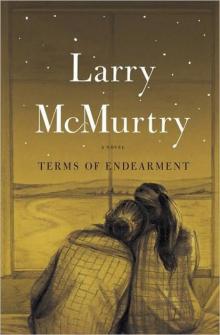 Terms of Endearment
Terms of Endearment Some Can Whistle
Some Can Whistle All My Friends Are Going to Be Strangers
All My Friends Are Going to Be Strangers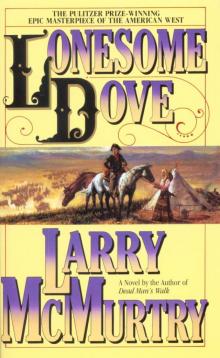 Lonesome Dove
Lonesome Dove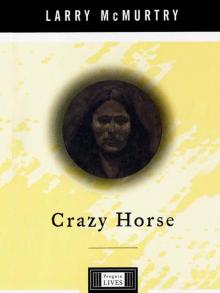 Crazy Horse: A Life
Crazy Horse: A Life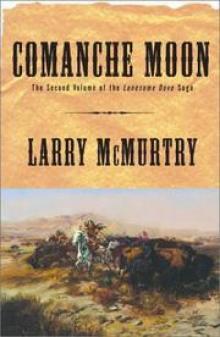 Comanche Moon
Comanche Moon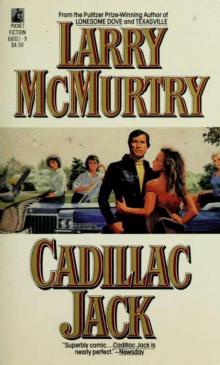 Cadillac Jack
Cadillac Jack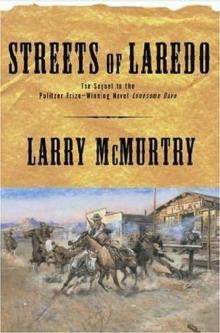 Streets of Laredo
Streets of Laredo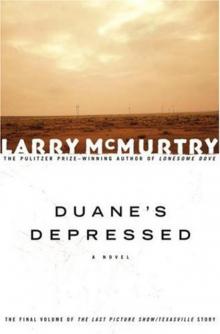 Duane's Depressed
Duane's Depressed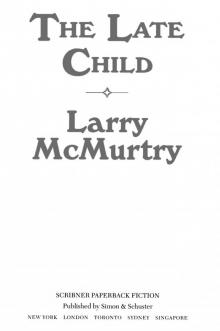 The Late Child
The Late Child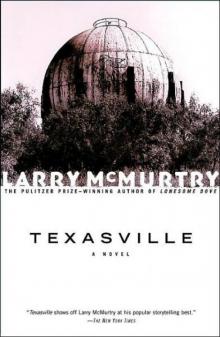 Texasville
Texasville Rhino Ranch
Rhino Ranch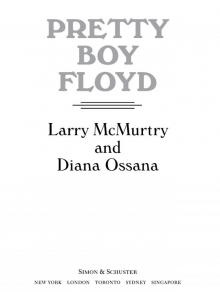 Pretty Boy Floyd
Pretty Boy Floyd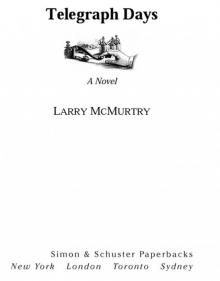 Telegraph Days
Telegraph Days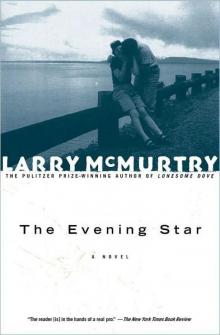 The Evening Star
The Evening Star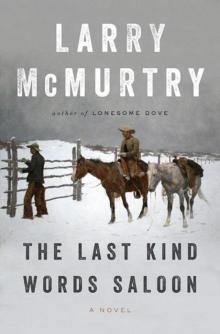 The Last Kind Words Saloon
The Last Kind Words Saloon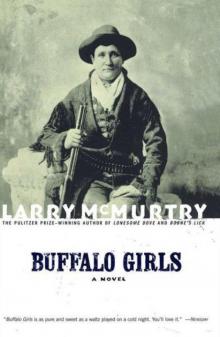 Buffalo Girls
Buffalo Girls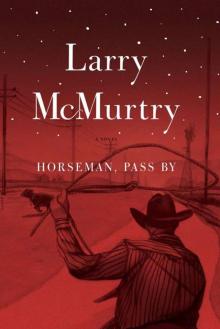 Horseman, Pass By
Horseman, Pass By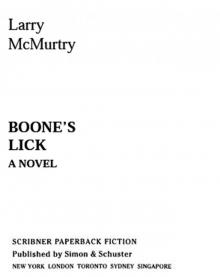 Boone's Lick
Boone's Lick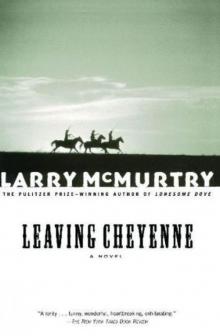 Leaving Cheyenne
Leaving Cheyenne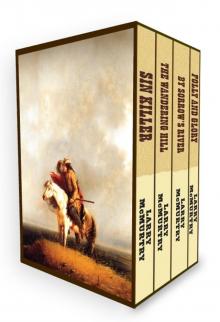 Sin Killer
Sin Killer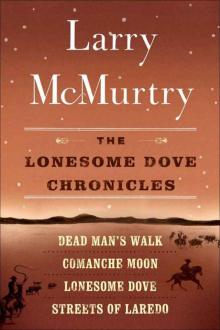 The Lonesome Dove Chronicles (1-4)
The Lonesome Dove Chronicles (1-4)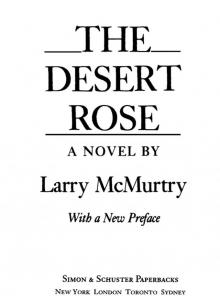 The Desert Rose
The Desert Rose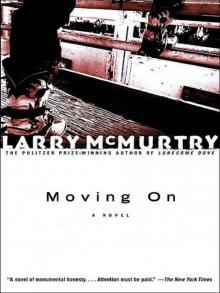 Moving On
Moving On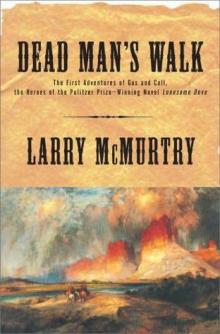 Dead Man's Walk
Dead Man's Walk The Last Picture Show
The Last Picture Show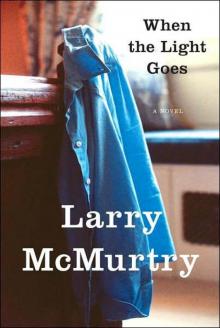 When the Light Goes
When the Light Goes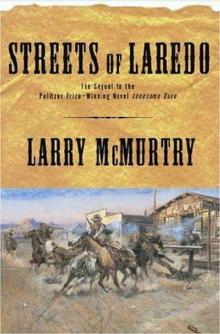 Streets Of Laredo ld-2
Streets Of Laredo ld-2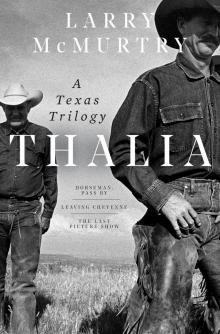 Thalia
Thalia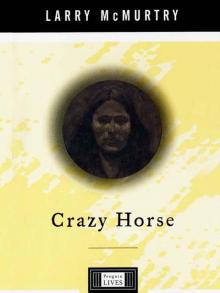 Crazy Horse
Crazy Horse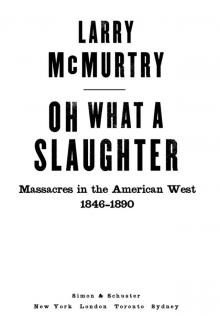 Oh What a Slaughter
Oh What a Slaughter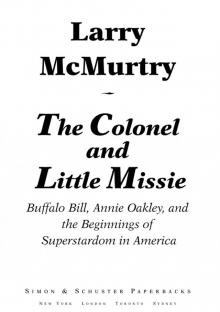 The Colonel and Little Missie
The Colonel and Little Missie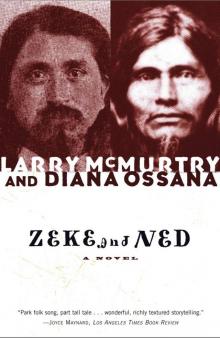 Zeke and Ned
Zeke and Ned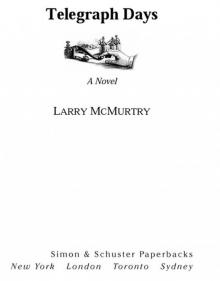 Telegraph Days: A Novel
Telegraph Days: A Novel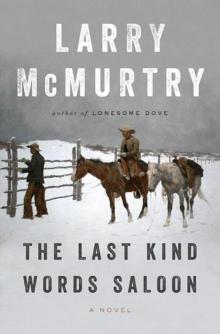 The Last Kind Words Saloon: A Novel
The Last Kind Words Saloon: A Novel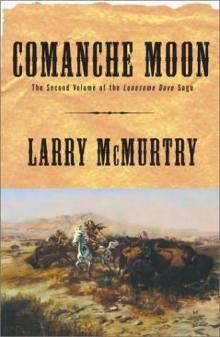 Comanche Moon ld-4
Comanche Moon ld-4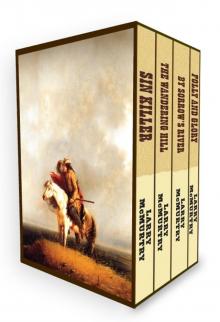 The Berrybender Narratives
The Berrybender Narratives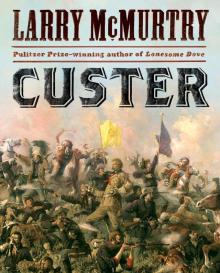 Custer
Custer